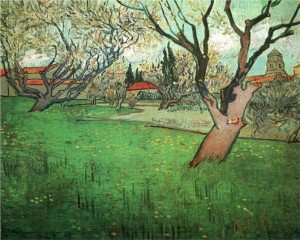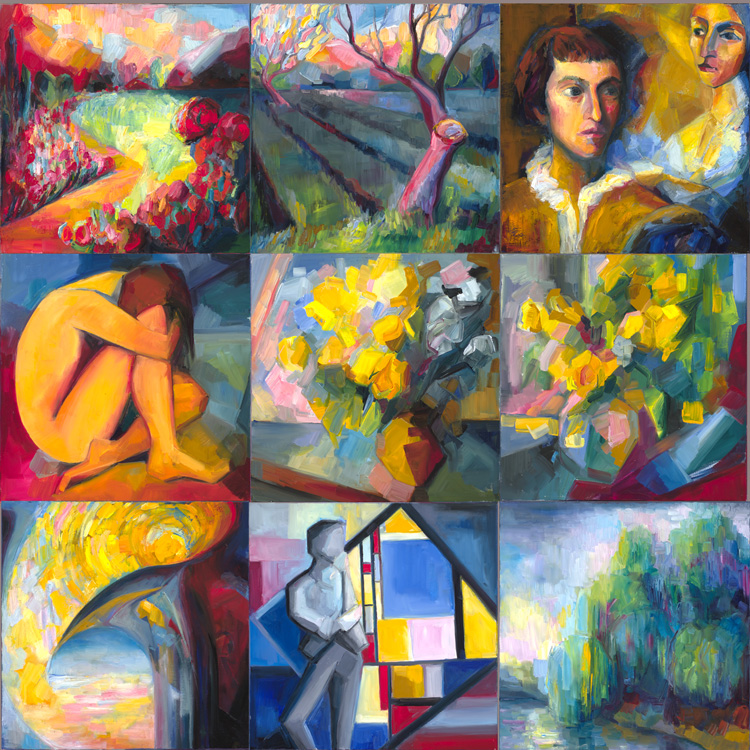When forty winters shall besiege thy brow,
And dig deep trenches in thy beauty’s field,
Thy youth’s proud livery, so gazed on now,
Will be a tatter’d weed, of small worth held:
Then being ask’d where all thy beauty lies,
Where all the treasure of thy lusty days,
To say, within thine own deep-sunken eyes,
Were an all-eating shame and thriftless praise.
How much more praise deserved thy beauty’s use,
If thou couldst answer ‘This fair child of mine
Shall sum my count and make my old excuse,’
Proving his beauty by succession thine!
This were to be new made when thou art old,
And see thy blood warm when thou feel’st it cold.
The landscape follows the overall geometry of the previous one, with the horizon line at the golden section, and the foreground tree supporting the golden section vertical on the right.
The motive for this landscape was loosely inspired by Vincent Van Gogh’s “View of Arles with Trees in Blossom” (1988), with an older bare tree in the foreground set against a blooming background. In the sonnet, the future winter (or even forty of them) is juxtaposed to a possible future spring/youth (in the person of the addressee’s possible child), yet both are contrasted to the implied present (when the addressee himself is young and blooming). Van Gogh’s motive provided the needed contrast between the old and the new, and the potential for ambiguity between the winter and the spring.
The central image of the poem integrated into the landscape is the deep trenches in thy beauty’s field, which separates the wintery, “old age” foreground from the youthful, springtime background, but also defines the overall inevitable movement from the foreground to the distant background – yet the field is painted in such a way, texture-wise, as to defy the implied perspective and allow for optical ambiguity between the “spring” background being faraway or on the same plane as the old tree. At the same time, the branches of the old tree strive to establish a link between the two.
The core of this attempt at a translation, however, lies in colour, playing at the possibility of seeing something “warm” while feeling it “cold” (in the couplet of the poem): the dominant colours are cold but they are used to set off the vibration between colder and warmer hues. Although the warm colours can be seen, they do not change the feel of coldness.



